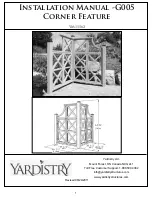
21 |
Operating
modes
3
Operating modes
3.1
Introduction
The operating modes are displayed on the AlphaPilot MFS Control Unit (see
on page 18) and
explained in this section. Symbols are used to clearly indicate the active autopilot operating mode.
To enable a heading control mode, press the
MODE|AUTO
button to change the control mode (the
identifier of the next available control mode appears on the display). When the desired control mode
is shown, confirm it, and the Autopilot goes into selected mode (the respective symbol appears in
‘Operating mode’ field on the display).
Symbol
Mode
Description
Standby
Autopilot is in Standby mode (not in control).
FU
Autopilot is in Follow-Up mode (not in control).
In FU mode, the vessel can be hand steered by using the FU Tiller or
Steering wheel. Hand steering is typically used when the vessel is
manoeuvring, and navigating in restricted waters, channels, and areas with
traffic density.
Auto
Autopilot is (in control) in Automatic heading control mode.
The autopilot steers the vessel to the reference course as shown on the
display. When wind and/or current will push the vessel off course, the
Autopilot will measure and counteract to keep the vessel to the set
heading.
The reference course will be the course the vessel has when Auto mode is
selected.
Track
Autopilot is in Track control mode.*
NFU
Autopilot is in Non-Follow-Up mode (not in control).
In NFU mode, the vessel can be hand steered by using the NFU Tiller.
Dodge
Short-term manual FU steering via the Autopilot MFS Control Unit.
Autopilot is in control.
* Track control mode combines an ECDIS with the Autopilot. The navigator can program a voyage
plan into the ECDIS that contains one or more tracks. The Track Control System (TCS) is used together
with the input from the sensors for position, course and speed and is designed to keep the vessel on
the plotted route.
















































